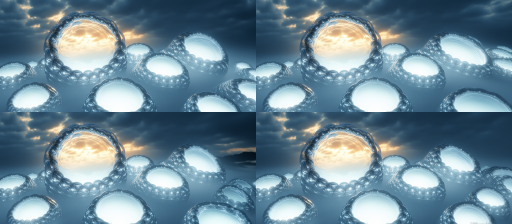Explore the Best AI Image Gallery

The New Frontier of Creativity: AI-Generated Visual Content
Artificial Intelligence (AI) has made significant inroads into a variety of fields, and the creative industry is no exception. With the advent of AI-generated visual content, new possibilities for creativity and innovation have emerged. From artists and designers to marketers, AI tools are being utilized to enhance creativity, automate processes, and generate unique content. This blog post will explore the multiple dimensions of AI-generated visual content, focusing on its impact, potential uses, ethical considerations, and future trends.
Impact on the Creative Industry
The impact of AI-generated visual content on the creative industry is profound. Artists and content creators are finding that AI can be a collaborative partner rather than a competitor. AI tools can help streamline tedious tasks, allowing artists to focus more on the creative aspects of their work. For example, AI can assist in generating initial drafts or outlines, making it easier for artists to experiment and innovate.
Moreover, AI-generated art has gained substantial traction, with pieces auctioned for shocking amounts of money. The famous piece “Edmond de Belamy,” generated by a GAN (Generative Adversarial Network), sold for $432,500 at auction, showcasing the vast potential and marketability of AI art.
Potential Uses of AI-Generated Visual Content
The versatility of AI-generated visual content opens the door to numerous applications across various fields:
- Marketing: Marketers are leveraging AI image-generating tools to create visually appealing ad campaigns quickly. These tools can analyze consumer behavior and generate imagery that resonates with target audiences.
- Entertainment: The film and gaming industries are increasingly using AI-generated visuals for concept art, character design, and even entire scenes, thereby reducing production time and costs.
- Fashion: In fashion, AI-generated designs are being used to predict trends and create tailored designs based on customer preferences. AI algorithms can analyze vast datasets to foresee what patterns, colors, and styles will be popular.
- Interior Design: AI tools can create personalized room designs by assessing user preferences, resulting in custom visual content tailored to individual tastes.
- Education: Educational content is also benefiting; AI can generate visual aids that bring complex subjects to life, enhancing student comprehension.
Ethical Considerations
As with any powerful tool, the rise of AI-generated visual content raises several ethical questions that warrant attention:
- Ownership: When AI creates art, who owns the final product? Is it the programmer of the AI, the user, or the AI itself? Clarifying ownership of AI-generated content remains a vital concern.
- Authenticity: The distinction between human-created and AI-generated art can sometimes blur. This raises questions about authenticity in art and whether AI-generated works can evoke genuine emotions or connections.
- Job Displacement: While AI serves as a creative collaborator, there are concerns about its impact on employment within the creative industry. Will there still be a demand for traditional creators, or will AI take over these roles entirely?
- Bias and Representation: AI systems can inadvertently perpetuate biases present in training data, leading to generated content lacking diversity or representation. Addressing this bias is essential for ethical AI use.
Future Trends
The future of AI-generated visual content is likely to be shaped by ongoing advancements in AI technology, further integrations into creative processes, and changes in societal perceptions around art and authorship:
- Increased Accessibility: As technology becomes increasingly user-friendly, more creators will have access to AI tools, democratizing creative processes and enabling a wider range of individuals to explore their artistic potential.
- Collaborative Platforms: Future creative platforms may incorporate more robust collaborative features, enabling artists and AI to co-create in real time, enhancing the synergy between human creativity and machine intelligence.
- Legal Frameworks: As AI-generated content becomes ubiquitous, expect to see legal frameworks emerge that address ownership, copyright, and liability related to AI creations.
- Customization and Personalization: Continued advancements will likely lead to increasingly personalized content creation, where AI can generate images and media based on individual preferences and behaviors.
Conclusion
AI-generated visual content is reshaping the creative landscape in unprecedented ways. While it presents various opportunities and applications across sectors, it also poses significant ethical and legal challenges that must be addressed. As we navigate this new frontier, a thoughtful approach will be essential to harness the true potential of AI while preserving the integrity of creativity and artistry.